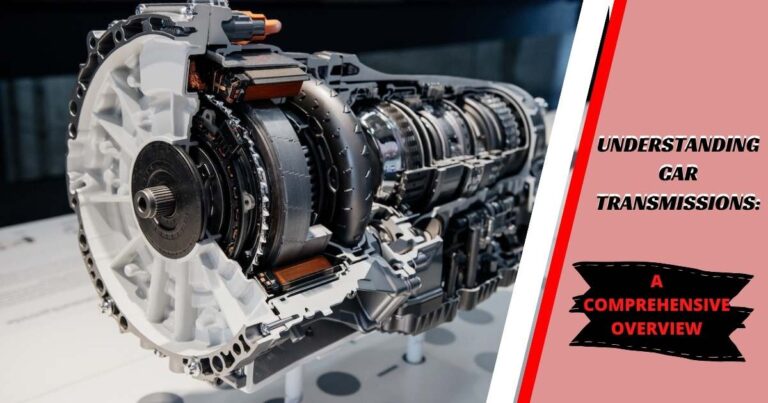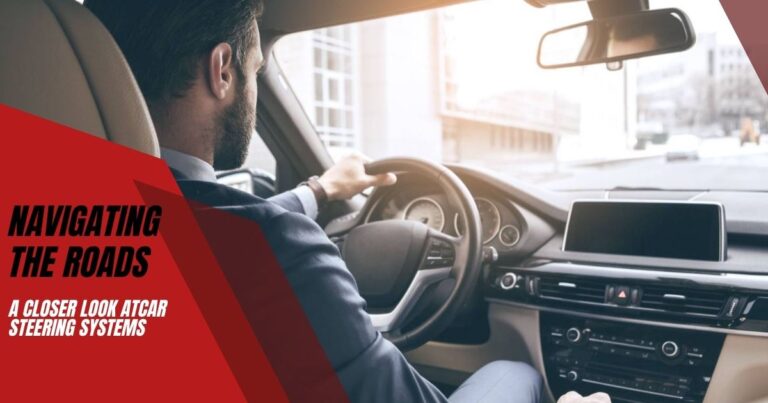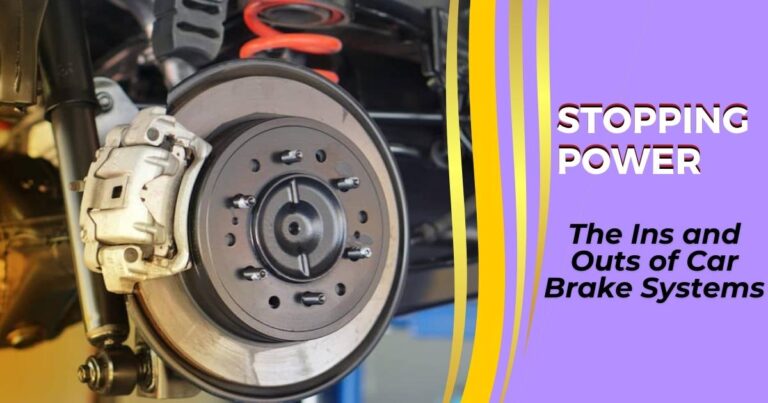In-Depth Look at Advanced Driver Assistance System
The move towards automation and safety in the car industry is a narrative of responding to societal needs and technological advancement. At the forefront of this evolution is the advent of Advanced Driver Assistance Systems (ADAS).
ADAS represents an integrated suite of cutting-edge technologies designed to augment and, in some instances, replace traditional human interventions in vehicle operation. Unlike traditional safety features that act as passive safeguards, ADAS is an active, intelligent suite of functionalities designed not just to respond to emergencies but to anticipate and prevent them altogether.
How ADAS Systems Work
ADAS operates as an intricate network of cutting-edge components and sensors designed to perceive, interpret, and respond to the dynamic environment surrounding a vehicle. The core functionality begins with the integration of an array of sensors, including cameras, radar, lidar, and ultrasonic sensors.
Once the sensors collect data, it undergoes intricate processing by onboard computers or ECUs. This processing involves advanced algorithms that analyze and interpret the sensory input to understand the dynamic environment in which the vehicle operates. This may entail identifying various elements such as pedestrians, other vehicles, cyclists, road signs, and lane markings.
The decision-making phase follows, where ADAS systems utilize algorithms to assess potential risks and determine appropriate responses. This process takes into account factors like the vehicle’s speed, the proximity of surrounding objects, and the prevailing road conditions to execute a command.
Subsequently, the system activates driver assistance features to provide real-time support to the driver in navigating the road safely. The feedback loop to the driver entails alerts and warnings delivered through visual cues, audible signals, or haptic feedback. These alerts prompt the driver to take corrective actions or stay vigilant in the face of inherent risks.
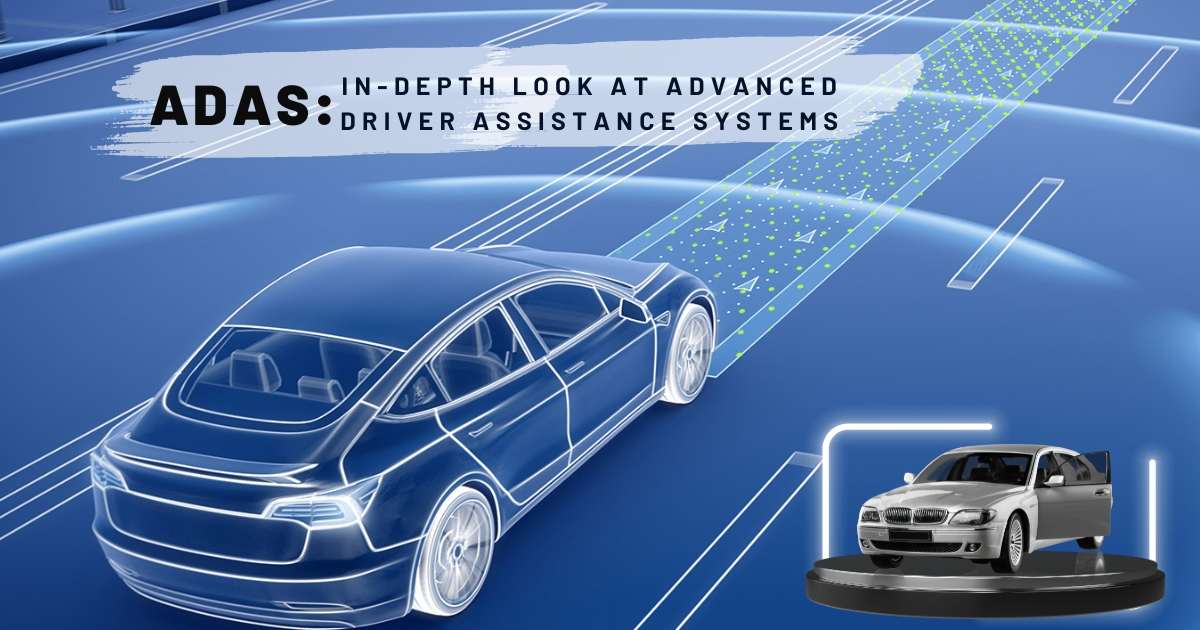
Overview of ADAS Technologies
As we have stated, ADAS technologies work by leveraging advanced sensors and cameras to actively monitor the vehicle’s surroundings and assist the driver in various aspects of driving. These technologies are subdivided into three broad categories, as highlighted below;
Alerts and Warnings
I. Alcohol Ignition Interlock Devices
Alcohol ignition interlock devices are safety features that prevent drivers from starting their cars if their breath alcohol level exceeds a predetermined limit. This feature serves as a crucial deterrent against drunk driving.
II. Blind Spot Monitor
The blind spot monitor employs cameras to watch over a driver’s blind spots and provide timely alerts. The monitor helps to enhance driver awareness, especially during lane changes.
III. Driver Monitoring System
Driver monitoring systems utilize infrared sensors and cameras to assess a driver’s alertness and attentiveness. The system monitors the driver’s interactions with the vehicle, including accelerator, brake, and steering wheel inputs. If the system detects a prolonged period of inactivity, it assumes that the driver may be incapacitated or asleep, thereby initiating emergency measures.
IV. Forward Collision Warning (FCW)
Forward collision warning systems monitor vehicle speed, distance, and the surrounding environment and issue alerts if a collision is imminent. FCW systems help prevent front-end collisions by providing timely warnings to drivers.
V. Electric Vehicle Warning Sounds
Electric vehicle warning sounds provide audible notifications to pedestrians and cyclists to alert them about the presence of hybrid or electric cars. The primary purpose is to address safety concerns associated with quiet electric vehicles, especially in low-speed environments.
VI. Intelligent Speed Adaptation (ISA)
Intelligent speed adaptation notifies drivers when they exceed the speed limit. Some advanced ISA systems can even adjust the vehicle’s speed to adhere to the limit.
VII. Intersection Assistants
Intersection assistants utilize radar sensors to monitor oncoming traffic at intersections. The assistants help enhance driver awareness and can engage emergency braking to prevent collisions.
VIII. Lane Departure Warning System (LDW)
Lane departure warning systems alert drivers when they unintentionally drift into another lane without signaling. The primary goal of LDW is to promote lane displine and help prevent accidents caused by unintentional lane departures.
IX. Parking Sensors
Parking sensors scan the vehicle’s surroundings during parking and issue audio warnings based on object proximity. These sensors contribute to safe and accurate parking.
X. Tire Pressure Monitoring
Tire pressure monitoring systems notify drivers of deviations from the normal inflation pressure range. This, in turn, helps ensure proper tire inflation while enhancing vehicle safety and fuel efficiency.
XI. Wrong-Way Driving Warning
Wrong-way driving warning systems issue alerts to drivers when detected on the wrong side of the road. This intervention helps reduce the risk of head-on collisions by notifying drivers of incorrect lane placement.
Driving Task Assistance Technologies
I. Adaptive Cruise Control (ACC)
Adaptive cruise control is designed to maintain a set speed and distance from the vehicle ahead. ACC uses sensors to monitor the road ahead and detect the speed and position of the car in front. The system then automatically adjusts the speed of your vehicle to ensure a safe following distance.
II. Anti-lock Braking System (ABS)
The Anti-lock braking system (ABS) is a safety feature designed to enhance vehicle control during emergency braking situations. ABS prevents the wheels from locking up, allowing the driver to maintain steering control and avoid skidding.
III. Automatic Parking
Automatic parking is a technology that simplifies and automates the parking process. With this feature, the vehicle takes control of parking functions, including steering, braking, and acceleration. Once the driver initiates the automatic parking system, the vehicle uses sensors and cameras to detect an appropriate parking space. The parking sensors then take over and guide the car into the parking space.
IV. Collision Avoidance System
A collision avoidance system is a safety feature that employs radar detectors to identify obstacles in a vehicle’s path. When the system detects a potential collision, it alerts the driver through visual or auditory signals.
V. Cruise Control
Cruise control is a convenience feature that allows drivers to maintain a constant, pre-selected speed without actively pressing the accelerator pedal. Once the driver sets the desired speed, the cruise control system takes over, keeping the vehicle moving at a steady pace.
VI. Crosswind Stabilization
Crosswind stabilization is a safety feature designed to enhance vehicle stability in adverse weather conditions, specifically during episodes of strong crosswinds. It achieves this by distributing the weight evenly, thereby preventing the vehicle from overturning.
VII. Electronic Stability Control (ESC)
The primary role of ESC is to reduce speed and apply individual brakes to prevent understeer and oversteer. The targeted braking helps correct the vehicle’s course and prevent skidding or sliding.
VIII. Hill Descent Control
Hill descent control is a technology designed to assist drivers when navigating downhill slopes. This feature helps maintain a safe and controlled speed while descending steep grades.
IX. Hill-Start Assist
Hill-start assist is a safety feature designed to prevent a vehicle from rolling backward when starting on an incline from a complete stop. This is especially useful in situations where drivers may face challenges in transitioning from the brake pedal to the gas pedal on an uphill slope.
X. Lane Centering
Lane centering is an advanced driving assistance feature that helps keep a vehicle centered within its lane. It utilizes sensors and cameras to monitor the vehicle’s position relative to lane markings.
XI. Lane Change Assistance
Lane change assistance enhances safety during lane changes by using sensors to detect approaching vehicles in the intended lane or blind spot. It provides visual and auditory alerts to caution the driver during lane-changing.
XII. Rain Sensors
Rain sensors automatically detect rain on the windshield and trigger actions, such as adjusting the wiper speed to enhance visibility for the driver. Once rain is detected, the sensors may activate windshield wipers at an appropriate speed based on the intensity of the rain.
XIII. Traction Control System (TCS)
The traction control system is a safety feature that prevents the loss of traction during acceleration by limiting tire slip. When the system detects wheel slip, it intervenes by adjusting the power delivered to the wheels or applying brakes to individual wheels.
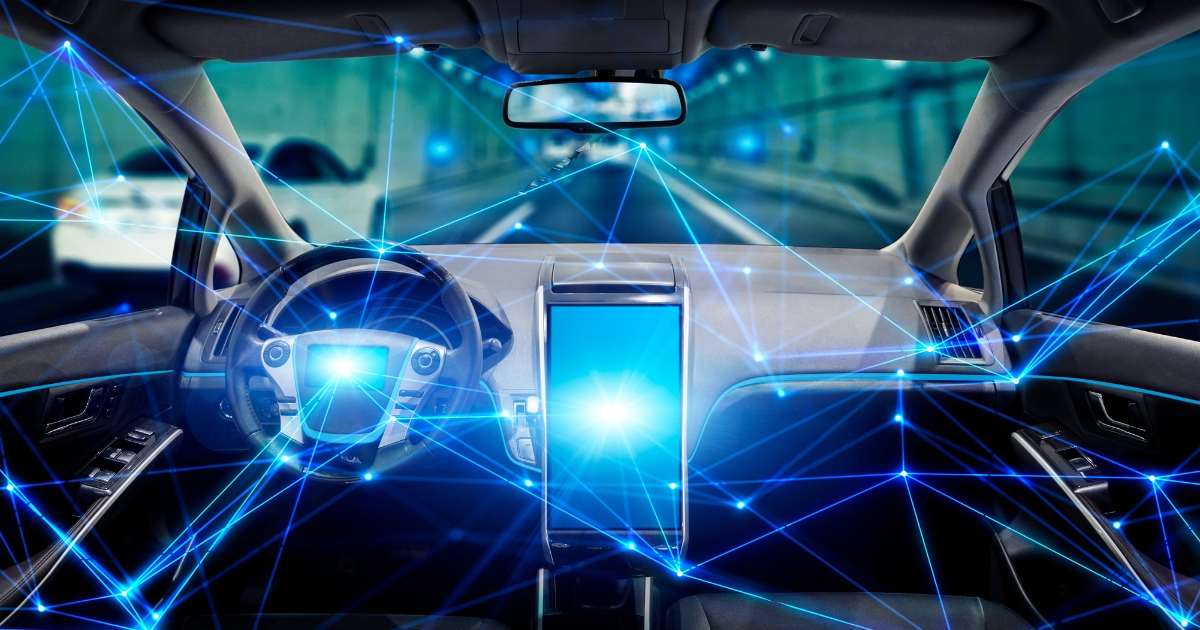
Visual and Environmental Monitoring
I. Automotive Head-Up Display (Auto-HUD)
Automotive head-up displays essential information directly onto the windshield to allow drivers to access key details without looking away from the road. It helps enhance situational awareness by displaying crucial data, such as speed, navigation instructions, or safety alerts, within the driver’s line of sight.
II. Automotive Navigation System
Automotive navigation systems utilize GPS technology and digital mapping tools to offer drivers up-to-date traffic and navigation information. The technology provides real-time guidance, turn-by-turn directions, and information about points of interest.
III. Automotive Night Vision Systems
Automotive night vision systems enable vehicles to detect obstacles in low-visibility conditions, such as darkness or adverse weather. It utilizes technologies like infrared sensors, lidar, radar, and GPS to provide a clear view of the road ahead beyond the range of standard headlights.
IV. Backup Camera
Backup cameras offer real-time video information to assist drivers during reversing. It is activated when the vehicle is put in reverse to provide a clear view of the area behind the vehicle, including blind spots.
V. Glare-Free High Beam
Glare-free high beam technology uses LEDs to adjust the distribution of high beams and prevent them from affecting oncoming vehicles. It helps ensure that the high beams remain active for the driver without causing discomfort or glare to drivers in the opposite direction.
VI. Omniview Technology
Omniview technology provides a 360-degree viewing system through video displays. It combines input from multiple cameras positioned around the vehicle to create a composite 360-degree image displayed on a screen.
VII. Traffic Sign Recognition (TSR) Systems
Traffic sign recognition systems use image processing techniques to recognize and interpret common traffic signs. The system analyzes the shape, color, and symbols on the signs to help identify various traffic regulations, such as speed limits, stop signs, and warning signs.
VIII. Vehicular Communication Systems (V2V, V2I, V2X)
Vehicular communication systems enable communication between vehicles and infrastructure. These systems allow vehicles to exchange information about their current position and potential hazards to enhance overall traffic management and safety.
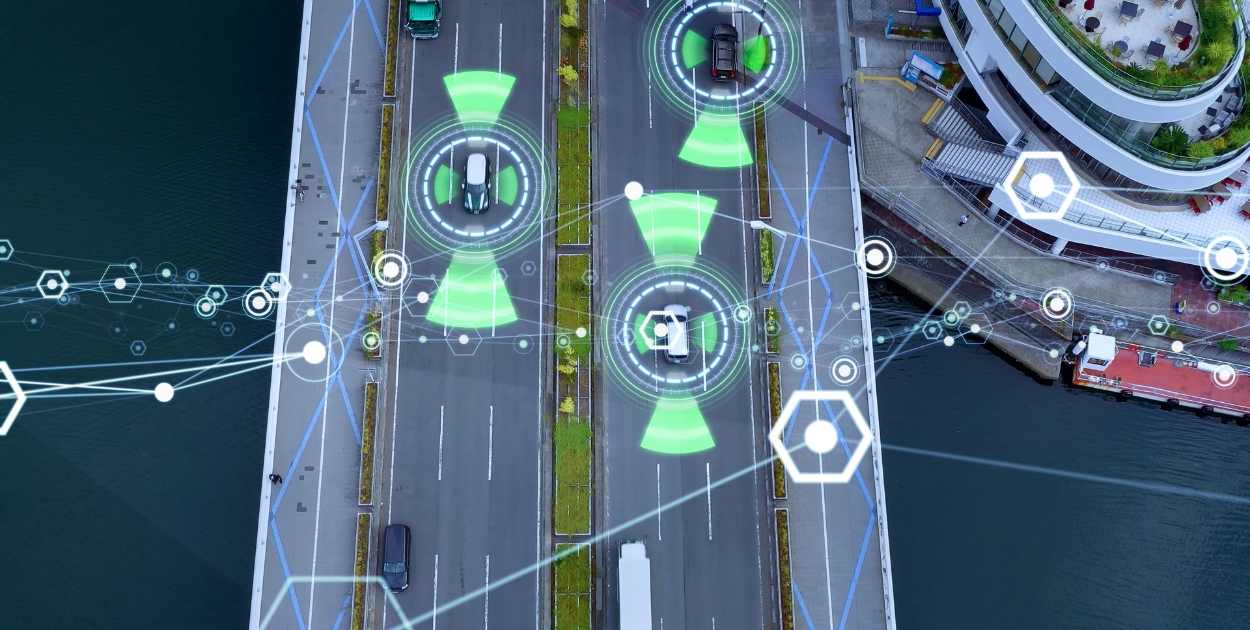
Benefits of ADAS In Terms of Safety and Convenience
ADAS technologies play a crucial role in improving road safety by providing real-time alerts and assistive actions. These features actively reduce the risk of accidents, which contributes to a safer driving environment. Furthermore, the safety measures extend beyond vehicle occupants to protect vulnerable road users.
ADAS enhances driver awareness through alerts and monitoring systems, which helps drivers stay attentive and focused. The increased awareness reduces the likelihood of distractions, thereby fostering safer driving habits.
Technologies like adaptive cruise control and intelligent speed adaptation contribute to smoother traffic flow by maintaining optimal speeds and distances between vehicles. This not only improves safety but also enhances overall traffic efficiency.
That’s not all. ADAS technologies often feature customizable settings that allow drivers to tailor their driving experience based on personal preferences and comfort levels. This personalization adds an extra layer of convenience for users while enhancing the overall driving experience.
Challenges and Considerations
The integration of ADAS into the automotive landscape brings forth a host of challenges that demand diligent attention. Some of the common challenges that you may encounter while using ADAS include;
Lack of Accuracy
The accuracy and consistency of ADAS systems can be challenging, particularly in varied driving conditions. Factors such as inclement weather, changes in lighting, and dynamic road environments can impact the reliability of sensors and the overall performance of the system. Despite these challenges, advancements in sensor technology and improved algorithms are underway to enhance the accuracy and consistency of ADAS.
Sensor Limitations
ADAS sensors play a crucial role in accurate object detection and tracking for effective traffic safety. However, current sensor technology is not flawless. Challenges include difficulty in detecting small or fast-moving objects, susceptibility to inclement weather, potential confusion by debris or animals, and interference from environmental factors like dirt, snow, fog and vehicle modifications.
Processor issues
The processing power of ADAS systems plays a vital role in real-time decision-making. Insufficient processing capabilities may result in delays or inaccuracies in interpreting sensor data, which might affect the system’s ability to respond promptly to changing driving conditions.
ADAS Software Algorithm Limitations
ADAS algorithms are often predefined to make decisions based on anticipated scenarios. However, they may face challenges adapting to unpredictable or novel situations that fall outside their programmed parameters. In such scenarios, the system may struggle to respond appropriately, leading to delayed or incorrect decisions.
GPS and Mapping Issues
ADAS systems often rely on GPS and mapping data for accurate positioning and navigation. Limitations in the precision of mapping data or inaccuracies in GPS signals can impact the system’s ability to provide precise location information. Luckily, you can improve GPS accuracy by performing regular updates to mapping databases and integrating advanced GPS technologies.
Over-Reliance on ADAS
Drivers may develop an over-reliance on ADAS by assuming that the system can handle all driving scenarios. This can lead to complacency and reduced driver attentiveness, especially in situations where the system may require human intervention.
In reality, these systems are intended to aid drivers, not substitute for them. There is a growing concern that some drivers might excessively rely on these safety features, thereby neglecting to remain attentive to the road.
Future Outlook and Trends of ADAS
The future of ADAS holds exciting prospects, marked by transformative advancements and evolving trends that are poised to reshape the landscape of automotive safety and automation. Here’s a glimpse into the future outlook and emerging trends in ADAS technology;
Integration of Machine Learning and Artificial Intelligence
The future trajectory of ADAS is intimately tied to the seamless integration of machine learning and artificial intelligence. This integration marks a shift towards more adaptable and intelligent systems that learn from real-world scenarios. Machine learning and AI algorithms are expected to empower ADAS to adjust to diverse driving conditions, resulting in a more flexible and intelligent driving assistance system.
Sensor Integration
Advancements in ADAS are steering towards the integration of sensor fusion, a technique that amalgamates data from multiple sensors. This fusion aims to create a more comprehensive and accurate perception of the vehicle’s surroundings. The result is a safer driving experience with reduced reliance on any single sensor.
Machine Vision Advancements
The evolution of ADAS machine vision is projected to provide sharper and more precise image recognition. This entails the deployment of advanced cameras and sophisticated image-processing algorithms to enable the system to recognize and interpret visual cues with higher accuracy.
Intelligent Decision-Making Systems
The future of ADAS envisions intelligent decision-making systems driven by sophisticated algorithms and data-driven insights. These systems will possess the capability to make complex decisions to help optimize safety and efficiency on the road. Furthermore, the ability to adapt to evolving road conditions and traffic patterns will provide a more personalized and responsive driving experience.
Autonomous Emergency Steering Systems
A noteworthy trend in future ADAS technologies is the development of Autonomous Emergency Steering Systems. Beyond providing warnings, these systems are expected to intervene actively and steer the vehicle away from imminent collisions.
Smart Intersection Assistance
Future ADAS advancements may incorporate smart intersection assistance, where the system utilizes Vehicle-to-Everything (V2X) communication and sensor data to enhance safety at intersections. Ideally, the system can provide warnings or even intervene to prevent collisions by detecting oncoming traffic or pedestrians.
Learning from Real-World Data
ADAS systems are expected to embrace continuous learning from real-world driving data. This approach ensures that the system refines its algorithms, addresses edge cases, and enhances overall performance based on vast datasets.
Summary
ADAS features are designed to assist drivers and improve overall safety on the road. These systems play a crucial role in delivering essential information concerning traffic conditions, road closures, blockages, congestion levels, and recommended routes to bypass congested areas. They can provide alerts and warnings, and even take corrective actions to prevent or mitigate potential collisions.
Additionally, they have the capability to assess the fatigue and distraction levels of the human driver and issue precautionary alerts or provide recommendations based on driving performance. In critical situations, these systems can assume control, and execute straightforward tasks such as cruise control, and handling more complex maneuvers like overtaking and parking. This not only assists drivers but elevates the overall safety standards of the journey.



